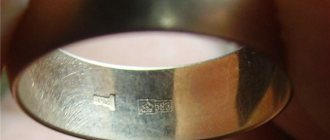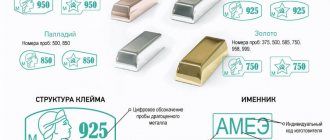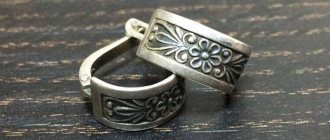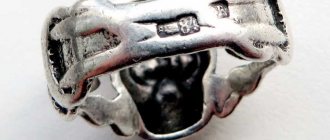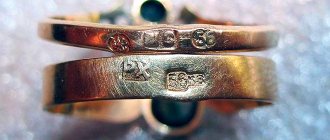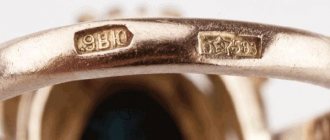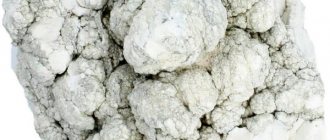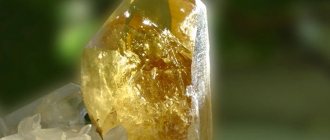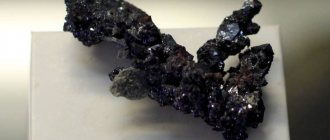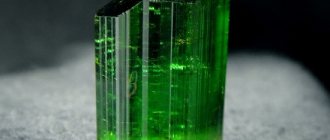There are words used in different meanings and situations. They are called polysemantic. There are terms that extend one concept to different industries and spheres of life. Take, for example, the word “stigma.” This concept is found in the literature, it is used in animal husbandry and jewelry. There are other areas where you can hear this word. What is a stigma, how to interpret and understand it? Let's figure it out.
The meaning of the word Brand according to Ushakov’s dictionary:
STAMP brand, pl. stamps, cf. 1. A seal, a sign affixed to goods to indicate origin, ownership or for registration. Factory mark. Ham with a brand. 2. A sign or brand burned into the skin of an animal. 3. In ancient times, in despotic states - a sign on the body of a criminal, usually in the form of letters (historical). 4. A weapon, the Crimea is branded (special). 5. transfer, what. A clear, noticeable trace of something. (book outdated). The stigma of misfortune. The stigma of illness. || An imprint, a reflection of something. disgracing, dishonoring (rhetoric). The stigma of shame. Wash away the stigma. The stigma of contempt. The mark of dishonor.
Second semantic series
Analyzing what the mark means, it is impossible not to recall the famous novel “The Three Musketeers”. There is a scene that reveals the essence of the concept being studied. On the beauty's shoulder, the count discovered the mark of the city of Lille. This seal has a different meaning. It used to be used as punishment. The mark was placed on the criminal so that anyone could understand the essence of this unscrupulous person. It was considered a great shame to be caught in the act of a crime. Those who broke the law were punished. But unlike the current generally accepted rules, they did not forgive. A person had to pay for what he had done until the end of his days. This is where the expression “branded with shame” comes from. It means moral responsibility for a mistake, which cannot be removed either by good deeds or by time.
The meaning of the word Brand according to Dahl's dictionary:
Stamp cf. sign put on objects, mark, seal. on horseback, brand. The stamp on the linen means the account, the name of the owner, the emblem of the treasury. The mark on the silver shows its kindness, the year, the name of the master. Customs stamp on goods cleared by duty. | A brand is also a tool used for branding. The master's mark will tell. It's crooked and askew; you can't fix it with a brand. He bears the mark of dishonor, disgraced, disgraced. Brand something, someone, impose a stigma. -sya, to be branded. Branding cf. valid by value verb Brander, brander h. who brands.
Another meaning of the word
In order to apply a burn with a special picture, you need a tool. The same can be said about seals on products. This tool has the same name - stamp. It is made unique or unified. For example, it is customary to apply a sample to jewelry. Its meaning is unified so that everyone can understand it. But, in addition, the brand may contain a manufacturer’s mark. He is unique. Each jeweler has its own symbol. In the past, each owner had his own mark so that it was possible to distinguish the property from similar ones, but owned by other owners. It was a kind of jurisprudence in its infancy.
Brand
The meaning of the word Brand according to Efremova: Brand - 1. A seal, mark, special sign on a product, product, indicating the name of the enterprise where the product is manufactured, the type of product, etc. // A mark burned on the body, hooves or horns of an animal; brand. // An indelible mark (usually in the form of a letter), etched and burned on the body of the convicted person as an additional measure of punishment. 2. transfer A sign, evidence of something. (usually bad, shameful). 3. A tool used to brand someone or something.
The meaning of the word Stamp according to Ozhegov: Stamp - An indelible mark (of something bad, disgraceful)
Stamp
A tool used to put such a sign
Stamp
Seal, a sign that is put, burned, etched on someone or something
The meaning of the word Brand according to the Business Dictionary: Brand - A. A tool, a tool used for branding.
B. Sign, seal remaining after branding.
B. An imprint, a sign, a mark applied to an object or product in order to record their ownership, serial number, year of production and manufacturer, as well as to confirm the compliance of this product with the legal sample and the requirements of assay supervision.
The meaning of the word Stamp according to the dictionary of synonyms: Stamp is a meta brand
brand
The meaning of the word Brand according to Ushakov’s dictionary: STAMP
stamps, plural
stamps, cf. 1. A seal, a sign affixed to goods to indicate origin, ownership or for registration. Factory mark.
Ham with a brand.
2. A sign or brand burned into the skin of an animal. 3. In ancient times, in despotic states - a sign on the body of a criminal, usually in the form of letters (historical). 4. A weapon, the Crimea is branded (special). 5. transfer, what. A clear, noticeable trace of something. (book outdated). The stigma
of misfortune.
The stigma
of illness.
|| An imprint, a reflection of something. disgracing, dishonoring (rhetoric). The stigma
of shame.
Wash away the stigma. The stigma
of contempt.
The mark
of dishonor.
The meaning of the word Stamp according to Dahl's dictionary: Stamp
Wed
a sign put on objects, a mark, a seal; on horseback, brand. The stamp
on the linen means the account, the name of the owner, the emblem of the treasury. The mark on the silver shows its kindness, the year, the name of the master. Customs stamp on goods cleared by duty. | A brand is also a tool used for branding. The master's mark will tell. It's crooked and askew; you can't fix it with a brand. He bears the mark of dishonor, disgraced, disgraced. Brand something, someone, impose a stigma. -sya, to be branded. Branding cf. valid by value verb Brander, brander h. who brands.
To be stamped Stamp Stamp Verification
BRANDING
Please note that I have included general information here about scar healing and formation and how it occurs. Try to read this and other sections as completely as possible (i.e., do not limit yourself to the section that particularly interests you).
What is branding?
Branding is scarification by burning.
High temperatures destroy tissue by causing severe burns. As the wound heals, a scar forms .
What is contact branding?
Penetration branding is the most common and traditional form of branding. It is based on applying a piece of hot metal to the skin to create a burn.
What is a "stroke"?
A stroke is a separate application of a stamp. A complete hallmark design is made up of many individual strokes, each of which creates a small segment of the final composition. The strokes will definitely overlap, and the artist may re-cauterize certain areas for cohesion (or to cauterize large flat areas).
What is burn marking?
Burn marking uses more modern means such as soldering devices to produce a burn. Some small medical cautery devices can be used to produce small, precise marks.
What is “laser” branding?
“Laser” branding is a term coined by Steve Howorth to help explain his electric burning device to the general public. Although medical lasers can be used for scarification, such marking is done using a device similar to an electric arc that welds the skin. The body is grounded and the spark jumps between the cutting electrode and the skin, vaporizing tissue in its path. Electric burning devices make it possible to better control the depth and nature of tissue damage, allowing an experienced specialist to obtain texturally different scars.
What does a healed brand look like?
Ideally, a healed mark will appear as a pattern of thick, raised lines, slightly lighter than the skin color. However, the degree of bulge or keloid varies greatly depending on a variety of factors. Sometimes these scars are retracted rather than convex.
Contact branding generally produces thicker, more raised scars, while modern burning devices produce finer lines.
How painful is branding?
Contact branding is actually much less painful than most people believe - in some ways it is as much a "mind game" as it is a physical challenge. Normal contact branding is painful for a second before the nerves are burned (unlike minor burns, such as those from a stove, which only affect the surface). What has been said should not be understood in the sense of “painless” - it is VERY painful both during and after applying the stroke.
It should also be noted that the endorphin rush can be significant and some people find the ensuing euphoria disorienting (and sometimes addictive). When you are being branded, it is best if you go with a friend who will help you get home if the experience is too much for you.
Electrical branding (including "laser" branding) is generally considered to be more painful than conventional branding, which most people opt for to ensure that they have undergone the most painful procedure possible.
Finally, no matter how painful the procedure itself is, the mark will remain a nuisance during the long healing period, especially on a moving part of the body (where the wound will spread apart with the slightest movement).
How hot should the stamp be when contact stamping?
Hot enough to damage the tissue enough to create a permanent scar. Depending on the specific skin and individual style of the artist, this can be anything from a propane torch to a small candle to the natural flame of an oak fire. The most experienced craftsmen lean towards a propane torch.
What are contact marking tools made of?
Contact branding tools are made of metal, either entirely or as small pieces held in tongs. Metal retains heat well and transfers it effectively and quickly to the skin.
Most crafters make their branding tools from a sheet of high quality stainless steel. Other materials were also used, such as accessories made of silver, non-ferrous metals (bolts, etc.), and sometimes even ceramics. Metal allergies and biocompatibility can sometimes occur to a certain extent, but in general, all foreign bodies will come off along with the scab (if they get there).
Regarding the thickness of the metal, thinner is preferable. It is easier to heat and easier to shape; the only drawback is the limited nature of the potential damage (although a red-hot half-inch bolt can cause enormous damage if applied to the skin for long enough). Also note that a typical healed mark will be 3 or 4 times the thickness of the tool and is usually never thinner than 3/16 inch (about the size of a line drawn with a thick marker).
What shape should a contact marking tool have?
A full mark is never done entirely. The entire design is divided into many smaller segments, no larger than 1.5 inches. These small segments, of course, can be shaped (eg arcs instead of lines). It should also be noted that small areas of skin surrounded by affected tissue (for example, a small burned circle) may also die and become part of the scar (as they will be deprived of blood supply).
How long and hard should you press the brand?
The brand should be pressed long enough to burn through the entire surface of the skin. Otherwise, the client will experience severe pain and blisters, and after healing there will be either no scar or something vaguely resembling the original design. How long and strongly depends directly on how heated the material was.
It is most important that all strokes are applied to the skin as this increases the chances that the mark will look monotonous. It should be noted that when the stamp is made, the leather on this place will shrink, deforming the fabric and slightly changing the path of subsequent strokes.
Are fumes from branding dangerous?
Vapors from branding contain biologically active substances of the branded substance and certain diseases can be transmitted through them. This was discovered because doctors who removed genital growths were later diagnosed with cases of genital growths in internal cavities. Although most viruses and bacteria that can harm humans will be killed by heat, a small number will remain and this should be taken into account.
Studios offering branding must have, at a minimum, a high-efficiency dry air filter. Wearing a mask should also be considered a minimum requirement. A good idea is to suck up the smoke with a vacuum filtration system (although this is not common).
Can I use golf ball initials? Why?
This idea is so ridiculous that I didn't even want to talk about it here, but I've been asked this question constantly for the last ten years. Once again, when the stamp is done, it blurs a lot. Typically, a healed mark is three to four times thicker than the tool used to make it. So if someone uses a letter stamp (which leaves tiny letters), the end result will be a blot. The mark should be large and simple enough to compensate for smearing. You will get approximately the same effect simply by putting out a cigarette on yourself.
Can I use a soldering iron for branding?
The problem with soldering irons, wood burners, and similar devices (including small medical hand-held cauterizers for stopping minor bleeding) is that they do not retain heat enough to be used reliably. To use them effectively, it is necessary to take so many "overheating" pauses that the client will experience incredible pain.
If such a tool is used, it must be extremely powerful to make the branding experience successful.
How long does it take for a brand to heal?
The brand (like all types of scarification) requires a long period of time to completely heal. The stigma goes through several phases, which differ greatly in time (and in nature) in each specific case.
In the first phase, the brand is covered with a scab and looks like an absolutely terrible wound. This phase takes from several weeks to a month. The brand will then appear as a bright red raised scar that will slowly turn pink and end up being slightly lighter than the normal skin color. This stage takes between six and twelve months for most people and additional growth may occur during this period.
How should I care for my brand during the healing period?
In general, there are two main schools of thought when it comes to scar care in general. Many practitioners believe that the best method is LEVP (“leave him alone”). Assuming the initial marks are well made, leaving them alone will allow the body to heal a well resistant wound. The downside to this method is that unless someone is genetically predisposed to forming keloids, the scar bulge will be minimal.
Another school of scarification care dictates irritating the wound (using a variety of methods from simply scraping off the scab to rubbing with a wire sponge or toothbrush to using chemicals and exfoliating compounds).
What if the mark doesn't heal the way I want it to?
If your mark (or scarification) does not heal as you would like (eg, inconsistent keloidation), you can correct it using repeated acts of scarification.
Is it possible to get a tattoo over a brand?
Yes, but the scar must be completely healed (at least a year old). Assuming the scar is completely healed, it can hold paint as well as "normal" skin. If the outline is dense (eg a large black area), the scar will probably be visible, but if the tattoo is multi-colored it will hide most of the scar.
Some people, especially those who are not genetically prone to keloids, also highlight the healed scar by lining it with light red or white, making it look like a keloid. more noticeable.
Is branding safe?
Scarification occurs through controlled damage. It is not safe. By the way, many things we do every day are also unsafe. Practiced responsibly by experienced practitioners, scarification of all types can be considered "acceptable risks".
Is it possible to remove the mark?
In theory, a cosmetic surgeon could remove the mark using lasers and other advanced techniques, but this would be very expensive and not always effective. Don't brand if you don't want to - it is a serious burn that will cause a serious burn scar and should be removed as such. Consider the time it usually takes for burn victims to hide their scars. In a real situation, it is impossible to remove the mark.
What is the history of branding?
Historically (in Europe), branding was generally used only as a punishment. Both the English (S on the cheek) and the French (lily on the shoulder) branded criminals, as did almost every other culture. Nowadays, members of black fraternities are branded with the letters of their fraternity.
Useful sites:
HairRoom Hairdressing services Music and dancing CanDance.ru History of cinema 100films.ru Horoscopes Horoscopesearch.ru Shopsss buy Shopshops.ru
